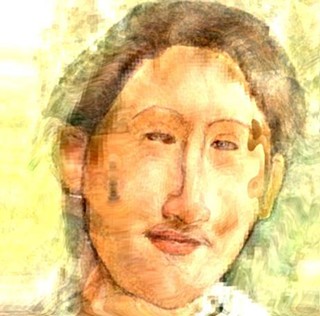On the Connecticut farm of Eugene O'Neill's A Moon for the Misbegotten, the people are as crusty as the land: A flinty roughness protects what remains of their softer, once-rich underlayers.
O'Neill's tragicomedy is enjoying a flawless presentation at Arizona Theatre Company, designed with an eye and ear for detail, directed with psychological insight but without physical or symbolic clutter, and acted with a desperate jocularity that barely disguises the characters' vulnerability, fear and yearning.
The farmhouse scene designed by Kent Dorsey is a wreck now settling into ruin. For 20 years--the date is 1923--this has been the hardscrabble home of tenant farmer Phil Hogan, an Irish immigrant and widower who drinks as mercilessly as he works himself and his daughter and two sons. The boys hate their father and the farm lifestyle, and run off as soon as they're adults; the play opens with the hasty departure of second son Mike, never to be seen again in the production's remaining two and a half hours.
Daughter Josie, however, long ago reached a strange, rough, loving détente with her father. They argue and Josie always keeps a club handy, but it's all ritual bluster, a game that perversely reveals rather than disguises their mutual affection and dependence.
A third player in this game is their landlord, James Tyrone Jr., a failed actor, failed student and failed son--but a remarkably successful alcoholic. The high point of Jim Tyrone's day is showing up at the farmhouse and indulging in well-rehearsed three-way needling with Josie and Hogan.
It's probably the closest thing to friendship any of them have, and between Tyrone and Josie, it could be more--except that Tyrone is a sorrowful, irresponsible drunk who disguises his self-loathing with charm, and Josie is a homely, immensely strong, oversized woman (her father calls her a cow, and O'Neill describes her as "almost a freak," 180 pounds on a 5-foot-11 frame) who disguises her self-loathing with a show of coarseness and pride.
Earlier in his career, O'Neill clad his characters in actual masks. Nothing literally covers a face in A Moon for the Misbegotten, but here, each character does wear an emotional mask; wrench one mask away, and you find another beneath it. As Josie admiringly says, her perpetually scheming father always has a trick behind his tricks, so nobody can see what he's really after. Similarly, Josie and Tyrone spend the second half of the play extricating themselves from ruse after ruse, stripping off one mask, then another, glimpsing each other's raw, true face for just an instant, and then putting the masks back on.
Although the play begins as a comedy, the bitter process of unmasking culminates in one of the most intense love scenes in American theater, a balance of sorrow and yearning and guilt and confession and forgiveness. It's a tribute to Samantha K. Wyer's tactful, tender direction that as Josie cradles the haggard, exhausted Tyrone in her arms on the farmhouse porch, we're so immersed in the Josie-Tyrone relationship that the scene registers only subconsciously as an allusion to a Renaissance pietà, a painting of Mary holding the dead Jesus. Wyer never makes more than is necessary of O'Neill's potentially heavy Christian and Oedipal references.
Tyrone is played by James Carpenter, returning to ATC for the first time since his heartbreaking portrayal of the incestuous pedophile, Uncle Peck, in How I Learned to Drive. After bringing such humanity to that character, Carpenter must have found Jim Tyrone a snap. Even in his early repartee, Carpenter keeps Tyrone's loneliness and self-disgust simmering right at the surface. It's a remarkable, moving and consistent portrayal of a character who could easily seem schizophrenic.
As Josie, Jeanne Paulsen is no less impressive. Her strength and sternness balanced by wry humor, Paulsen only gradually reveals the pain Josie feels from her own self-image.
Drew Snyder is an engaging Hogan, a feisty old man full of that gimpy swagger you find in proud men of the underclass determined to reign supreme over what little pieces of life they have any chance of controlling.
Christopher M. Williams and Mark DeMichele acquit themselves well in miniscule roles. More prominent is the work of lighting designer Dennis Parichy, who delicately moves the scene from noon through dusk and midnight to the following dawn.
Anticipating the night scenes, Hogan expects the moon to fill Tyrone and maybe Josie with poetry, but the moon instead palely illuminates certain prosaic truths the characters would prefer to keep in the shadows. The moon presides unseen over a story of love grudgingly admitted and peculiarly reciprocated. But it is love, nonetheless.











